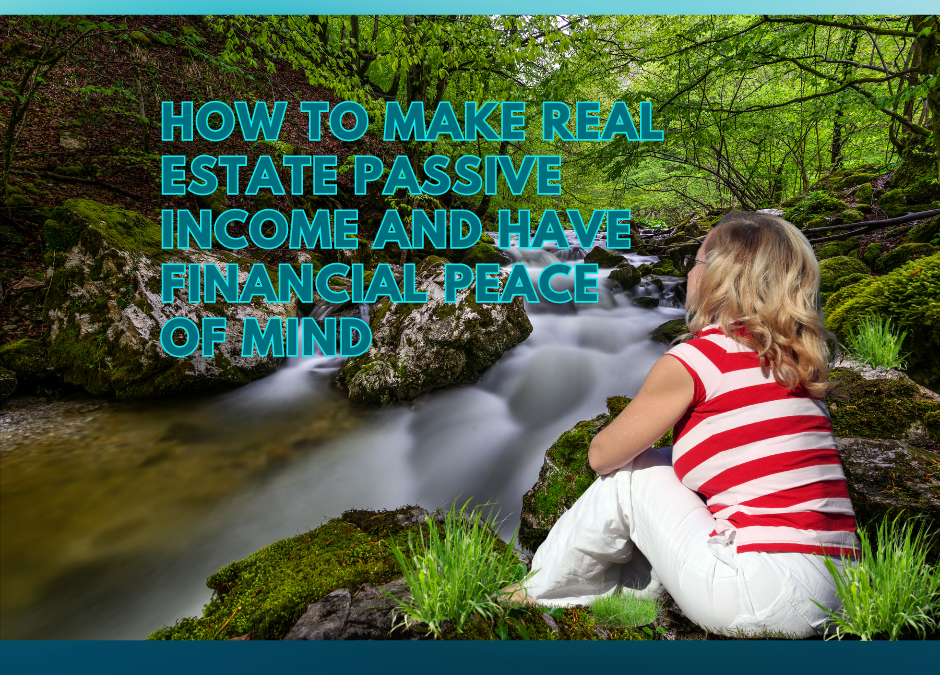Most people are taught about and only think about active income. Most of us are taught to go to school, get a job and earn income. You exchange your time for cash. However, the problem with this is that active income is taxed at the highest rate of all sources of income. You can learn how to make real estate passive income and have financial peace of mind.
Yep. No joke. Read it and weep. The form of income that is taxed the greatest is active income.
Now you may want to ask yourself, “Why should I keep working my butt off to make active income if so much of it will be taxed?”.
One way to look at things may be to flip the script and focus on passive income and increasing that revenue stream until it matches or exceeds your active income.
The US school system prepares us to become cogs in the active income-generating and tax siphoning cycle, teaching us to work and trade time for income. We are taught to earn $8,000 a month, pay 40% of it in taxes, and be left with $4,800 a month in earned income. In comparison, a person who earns $8,000 a month in passive income would only pay $1,150 in taxes, leaving them with $6,400 each month.
Don’t worry about the exact numbers here. Just plug in whatever numbers apply to you and your household and do the math. See the difference? It can be staggering the larger the amount is.
So, let me ask you, “How much do you pay in taxes?”.
You Still Need to Work
To be clear, most people will still need to work and save in order to make investments that generate passive income. Keep plugging along, creating that active income and take your earnings and INVEST them so you receive passive income. The objective is to save up enough money to invest, then to keep doing so until your active income is equal to or greater than your passive income.
Financial peace of mind for most of us is about having multiple streams of income which cover living expenses, whether or not you work daily. This can be achieved by having multiple assets or investments generating passive income streams, allowing you to design your time and life as you wish instead of worrying about having enough money when you retire.
The goal is to allow yourself to own your dream and live the life you desire and deserve, whatever that looks like to you.
Why Real Estate Passive Income?
Consider how you see using your spare time. Passive income is the answer if you’ve ever wanted more time flexibility so that you can travel more, spend more time with your kids and family, or give back to your community.
Maybe you are already aware that investing in stocks can result in passive income. After the 2022 market drama, you likely now know that it can be a roller coaster ride, and now you are looking for other options.
Because you are investing in hard assets, real estate investing generates consistent revenue streams backed by something tangible.
Passive Income Ingredients
How do you get started now that you are aware of the importance of passive income in achieving financial freedom?
- Put your energy into increasing your passive income until it reaches the same level as your active income.
- Make investments in tangible items that appreciate in value.
- Invest only in non-disruptible assets.
One of the main justifications for real estate investing is argument number three above. People always need a place to live, regardless of the weather, the state of the economy, or their social standing. This is why multifamily investments have lasted the test of time.
How to Create Passive Income Through Real Estate Investing
Every one of us is an investor. Either you invest your money to create passive income, or you invest your time and effort to generate an active income. But you are investing in something.
For instance, a doctor may treat patients and get $250 from the insurance provider. The money was made in exchange for the doctor’s time.
Investing your money through passive income can help you grow your nest egg without having to invest your time. Traditional savings accounts are usually reserved for emergencies, but investments in multifamily real estate syndications can start earning cash flow and appreciation without the need for time investment. Have you looked at the returns you are getting on the money sitting in your savings account? It’s so small you may not even notice it.
7 Steps to Building Passive Income Through Real Estate Investing
#1 – Start With Your Why
This is always a great place to start. YOU have to establish a compelling why.
According to BiggerPockets, you need to modify three things in order to become wealthy. All three procedures are allegedly necessary because if one leg of the tripod is damaged, the tripod topples over.
The Wealth Tripod:
- You need to have faith in your own ability to prosper.
- You should understand how wealth is created.
- You have to take the necessary actions to make it happen.
Although not every investment works out as you had hoped or anticipated, having a clear sense of why you are making an investment can help you learn from each failure, push outside your comfort zone, and stay on pace to reach your investing objectives.
This tripod example is true in entrepreneurship and in investing. Have faith, knowledge and take action! You have to be backed by a significant “why” to propel you forward, especially during difficult times.
#2 – Take Action
The true secret to meeting your goals, like with most other things in life, is taking consistent action. A lot of people get started, get excited then never pull the trigger or take the action necessary to realize success.
Make the commitment to block out time each day to move the needle forward.
#3 – Decide What Type of Real Estate Investor You Want to Be
Investing your money can generate more income, passive income, without investing your time. Do you prefer active or passive investing?
Here are some questions you can ask yourself to see which one you prefer:
- Do you have free time to devote to active investing after taking care of your family and job requirements?
- Do you have the time to independently manage rental properties including tenant screening and collections?
- Can you physically maintain rental properties and do the necessary repairs?
- Will you engage a property management business or do you have supportive (soon-to-be team members) who can assist and/or manage the property?
- Are you able to make strategic decisions concerning your property, such as those involving repairs, evictions, acquisitions, and sales?
If not, it’s alright. You may discover that investing passively in real estate syndications rather than actively in individual rental properties is better for your lifestyle, present financial situation and season of life.
#4 – Decide What Type of Real Estate Assets to Invest In
Residential and Commercial real estate investing are the two main categories.
Residential properties, such as single-family houses, duplexes, triplexes, and quads, have four units or less.
Office buildings, retail establishments (strip malls), storage facilities, and multifamily apartments with five or more units together are all considered commercial properties.
Real estate syndications offer less risk than other direct investments, like investing in a single-family house, which makes them a better option for some families.
#5 – Learn and Utilize The Wealth Generators
Wealth Generators should be considered when investing in physical properties.
Cashflow
The possibility for cash flow is one of the most alluring benefits of purchasing real estate. Cash flow is the remaining funds each month after paying the mortgage and monthly property expenditures. Knowing that money is “flowing” into our life allows us to stress less and to mitigate the risk of having all of our eggs in one basket (aka a J-O-B).
Appreciation
A property experiences appreciation as its value rises over time. There are ups and downs with every investment, but traditionally, the value of real estate in the US has increased.
However, there is another type of appreciation. It’s personally my favorite and is called forced appreciation.
Investing in value-add commercial real estate, where revenue increases and expenses decrease is how you “force” appreciation. One of the benefits of commercial real estate is that the valuation is based on financials.
Leverage
Tenants pay rent each month and you use this to pay the mortgage. Their rent payment reduces the amount owed on your loan. By doing this, you gradually increase your equity in the asset.
The asset is paying for itself via rent payments.
Tax Advantages
Tax benefits are one of the most underappreciated benefits of accumulating wealth through real estate. Real estate owners are entitled to write off: interest, insurance, upkeep, depreciation and more.
If you are a passive investor, a lot of these tax benefits are realized by you through a K-1, which is issued to you, an investor in the entity that owns the asset, each spring.
Additionally, investors can postpone capital gains taxes when they sell a property and use a 1031 exchange to reinvest the earnings. These benefits and more are enjoyed by passive investors.
#6 – Find the Right Investment Opportunity
Once you’ve made the decision to pursue passive real estate rather than active rental property investing, you need to look for an opportunity that aligns with your passive investing goals.
We will discuss investment offerings with you in more detail once you join the Ohana Investment Partners Investor Club. Our goal is to walk through the journey of passive real estate investing with you and to help you exceed your goals.
Some of the things we look for in an offering are: an experienced operating team, strong markets, and a value-add business plan with conservative underwriting and exit strategies.

